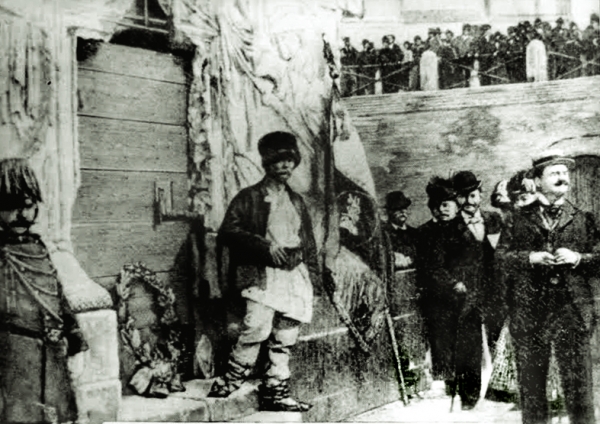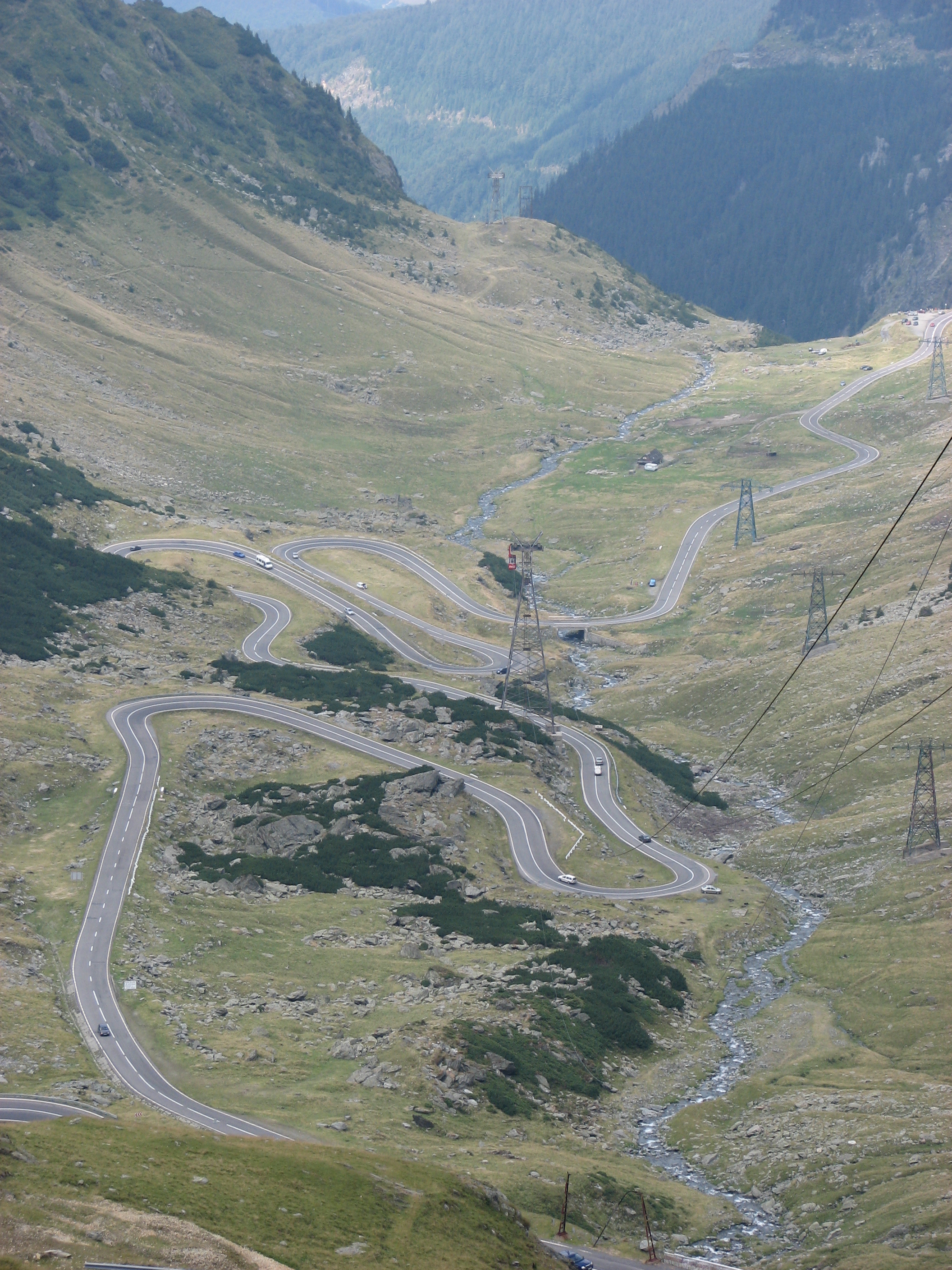|
Cârțișoara River
Cârțișoara (also ''Cârța Românească''; ; ) is a Commune in Romania, commune in Sibiu County, Transylvania, Romania. It is composed of a single village, Cârțișoara. Bâlea Lake is located on the territory of Cârțișoara. The commune is located in the southeastern part of the county, from the county seat, Sibiu, and from Făgăraș. Cârțișoara is situated at the western edge of Țara Făgărașului, on the northern side of the Southern Carpathians, at the foot of the Făgăraș Mountains; it lies on the border with Argeș County and near the borders with Vâlcea County, Vâlcea and Brașov County, Brașov counties. The commune sits on the left bank of the river Cârțișoara (river), Cârțișoara, which flows south to north, discharging into the Olt (river), Olt River. At the 2011 census, Cârțișoara had a population of 1,243 inhabitants, of which 96.3% were ethnic Romanians. Tourist attractions * Badea Cârțan Museum * Bâlea Lake * Bâlea Lake Ice Hotel * B ... [...More Info...] [...Related Items...] OR: [Wikipedia] [Google] [Baidu] |
Commune In Romania
A commune (''comună'' in Romanian language, Romanian) is the lowest level of administrative subdivision in Romania. There are 2,686 communes in Romania. The commune is the rural subdivision of a Counties of Romania, county. Urban areas, such as towns and cities within a county, are given the status of ''Cities in Romania, city'' or ''Municipality in Romania, municipality''. In principle, a commune can contain any size population, but in practice, when a commune becomes relatively urbanised and exceeds approximately 10,000 residents, it is usually granted city status. Although cities are on the same administrative level as communes, their local governments are structured in a way that gives them more power. Some urban or semi-urban areas of fewer than 10,000 inhabitants have also been given city status. Each commune is administered by a mayor (''primar'' in Romanian). A commune is made up of one or more villages which do not themselves have an administrative function. Communes ... [...More Info...] [...Related Items...] OR: [Wikipedia] [Google] [Baidu] |
Brașov County
Brașov County () is a county (județ) of Transylvania, Romania. Its capital city is Brașov. The county incorporates within its boundaries most of the Medieval "lands" (''țări'') Burzenland and Făgăraș. Name In Hungarian language, Hungarian, it is known as ''Brassó megye'', and in German language, German as ''Kreis Kronstadt''. Under Austria-Hungary, a county with an identical name (Brassó County, ) was created in 1876, covering a smaller area. Demographics At the 2011 Romanian census, 2011 census, the county had a population of 549,217 and the population density was . * Romanians – 87.4% * Hungarians in Romania, Hungarians – 7.77% * Romani people in Romania, Romas – 3.5% * Germans of Romania, Germans (Transylvanian Saxons) – 0.65% At the 2021 Romanian census, 2021 census, Brașov County had a population of 546,615 and the population density was . * Romanians – 88.33% * Hungarians in Romania, Hungarians – 5,98% * Romani people in Romania, Romas – 4.98% ... [...More Info...] [...Related Items...] OR: [Wikipedia] [Google] [Baidu] |
RO SB Transfagarasan 3
RO or Ro may refer to: Businesses and organizations * Ro (company), an American telehealth company * Royal Ordnance, a British armaments manufacturer * TAROM, a Romanian airline, IATA airline code RO Places * Rø, Denmark * Ro, Emilia-Romagna, Italy * Ro, Greece, a small Greek island * Romania (ISO 3166-1 country code RO) Science and technology * .ro, Internet country code top-level domain for Romania * Ro (antigen) * Autoantigen Ro, a protein * Ro (volume), an Egyptian unit of measurement * Radio occultation, a technique for measuring the properties of an atmosphere * Reactor operator, a person who controls a nuclear reactor * Reverse osmosis, a water purification process * Receive only, a type of teleprinter * Anti-SSA/Ro autoantibodies (anti–Sjögren's-syndrome-related antigen A autoantibodies) Other uses * Ro (kana), a Japanese character * Ro (name), a given name, nickname and surname ** Ro (dubious Danish king) * Ro (pharaoh) or Iry-Hor (fl. c. 3170 BC), Egyptian pha ... [...More Info...] [...Related Items...] OR: [Wikipedia] [Google] [Baidu] |
Badea Cârțan
Badea Cârțan (roughly: ''Elder Brother Cârțan'' – the common nickname of Gheorghe Cârțan; 24 January 1849 – 7 August 1911) was a self-taught ethnic Romanian shepherd who fought for the independence of the Romanians of Transylvania (then under Hungarian rule inside Austria-Hungary), distributing Romanian-language books that he secretly brought from Romania to their villages. In all he smuggled some 200,000 books for pupils, priests, teachers and peasants; he used several routes to pass through the Făgăraş Mountains. He was born in Cârțișoara, present-day Sibiu County, the second child of poor peasants (Nicolae and Ludovica) who were former serfs, and he spent his childhood tending sheep at the edge of his village. In between his later brushes with fame, he would always return to this activity. He became the head of his family on 2 October 1865 with the death of his father. Cârţan first crossed the mountains into the Romanian Old Kingdom with his sheep ... [...More Info...] [...Related Items...] OR: [Wikipedia] [Google] [Baidu] |
Transfăgărășan
The Transfăgărășan (''trans'' + Făgăraș Mountains, ''Făgăraș''; Hungarian language, Hungarian: Transzfogarasi út) or DN7C is a paved mountain road crossing the southern section of the Carpathian Mountains of Romania. It has Roads in Romania, national-road ranking and is the second-highest paved road in the country after the Transalpina (DN67C), Transalpina. It starts near the village of Bascov, near Pitești, and stretches to the crossroad between the DN1 and Sibiu, between the highest peaks in the country, Moldoveanu Peak, Moldoveanu and Negoiu Peak, Negoiu. The road, built in the early 1970s as a strategic military route, connects the historic regions of Transylvania and Wallachia. History The Transfăgărășan was constructed between 1970 and 1974 during the rule of Nicolae Ceaușescu as a response to the 1968 Warsaw Pact invasion of Czechoslovakia, invasion of Czechoslovakia by the Soviet Union. Ceaușescu wanted to ensure quick military access across the mounta ... [...More Info...] [...Related Items...] OR: [Wikipedia] [Google] [Baidu] |
Romanians
Romanians (, ; dated Endonym and exonym, exonym ''Vlachs'') are a Romance languages, Romance-speaking ethnic group and nation native to Central Europe, Central, Eastern Europe, Eastern, and Southeastern Europe. Sharing a Culture of Romania, common culture and Cultural heritage, ancestry, they speak the Romanian language and live primarily in Romania and Moldova. The 2021 Romanian census found that 89.3% of Romania's citizens identified themselves as ethnic Romanians. In one interpretation of the 1989 census results in Moldova, the majority of Moldovans were counted as ethnic Romanians as well.''Ethnic Groups Worldwide: A Ready Reference Handbook By'' David Levinson (author), David Levinson, Published 1998 – Greenwood Publishing Group.At the time of the 1989 census, Moldova's total population was 4,335,400. The largest nationality in the republic, ethnic Romanians, numbered 2,795,000 persons, accounting for 64.5 percent of the population. Source U.S. Library of Congres ... [...More Info...] [...Related Items...] OR: [Wikipedia] [Google] [Baidu] |
Olt (river)
The Olt ( Romanian and Hungarian; ; or ', , ''Alytos'') is a river in Romania. It is long, and its basin area is . It is the longest river flowing exclusively through Romania. Its average discharge at the mouth is . It originates in the Hășmaș Mountains of the eastern Carpathian Mountains, near Bălan, rising close to the headwaters of the river Mureș. The Olt flows through the Romanian counties of Harghita, Covasna, Brașov, Sibiu, Vâlcea, and Olt. The river was known as ''Alutus'' or ''Aluta'' in Roman antiquity. Olt County and the historical province of Oltenia are named after the river. Sfântu Gheorghe, Râmnicu Vâlcea and Slatina are the main cities on the river Olt. The Olt flows into the Danube river near Turnu Măgurele. Settlements The main cities along the river Olt are Miercurea Ciuc, Sfântu Gheorghe, Făgăraș, Râmnicu Vâlcea and Slatina. The Olt passes through the following communes, from source to mouth: Bălan, Sândominic, To ... [...More Info...] [...Related Items...] OR: [Wikipedia] [Google] [Baidu] |
Cârțișoara (river)
The Cârțișoara () is a left tributary of the river Olt in Romania. The source of the Cârțișoara is near Bâlea Lake in the Făgăraș Mountains The Făgăraș Mountains ( ; ) are the highest mountains of the Southern Carpathians, in Romania. Geography The mountain range is situated in the heart of Romania, at . The range is bordered in the north by the Făgăraș Depression, through wh .... It discharges into the Olt in Cârța. e-calauza.ro Its length is and its basin size is . References Rivers of Romania Rivers of Sibiu County {{Sibiu-ri ...[...More Info...] [...Related Items...] OR: [Wikipedia] [Google] [Baidu] |
Vâlcea County
Vâlcea County (also spelt ''Vîlcea''; ) is a county (județ) that lies in south-central Romania. Located in the Historical regions of Romania, historical regions of Oltenia and Muntenia (which are separated by the Olt (river), Olt River), it is also part of the wider Wallachia region. Its capital city is Râmnicu Vâlcea. Demographics In 2011, it had a population of 355,320 and the population density was 61.63/km2. * Romanians - over 98% * Romani people in Romania, Roma, Minorities of Romania, others - 2% Geography This county has a total area of . The North side of the county is occupied by the mountains from the Southern Carpathians group: the Făgăraș Mountains in the east with heights over , and the Lotru Mountains in the west with heights over . They are separated by the Olt (river), Olt River valley — the most accessible passage between Transylvania and Muntenia. Along the Olt River valley there are smaller groups of mountains, the most spectacular being ... [...More Info...] [...Related Items...] OR: [Wikipedia] [Google] [Baidu] |
Sibiu County
Sibiu County () is a county () of Romania, in the historical region of Transylvania. Its county seat () is the namesake town of Sibiu (). Name In Hungarian, it is known as ''Szeben megye'', and in German as ''Kreis Hermannstadt''. Under the Kingdom of Hungary, a county with an identical name (Szeben County, ) was created in 1876. Demographics At the 2021 census, Sibiu county had a population of 388.326 residents and a population density of 71.48/sq.km(27,59sq.mi) At the 2011 Romanian census, 2011 census, the county has the following population indices: * Romanians – 91.25% (or 340,836) * Romani people in Romania, Romani – 4.76% (or 17,901) * Hungarians in Romania, Hungarians – 2.89% (or 10,893) * Germans of Romania, Germans (Transylvanian Saxons) – 1.09% (or 4,117) * Minorities of Romania, Other – 0.1% (or 640) At the 2021 Romanian census, 2021 census, the county has the following population indices: * Romanians – 93.36% (or 313,118) * Romani people in ... [...More Info...] [...Related Items...] OR: [Wikipedia] [Google] [Baidu] |





